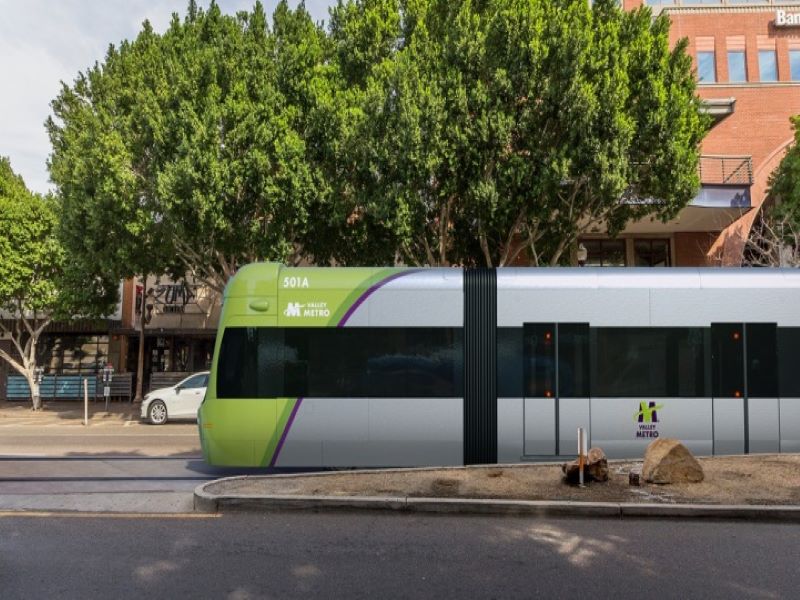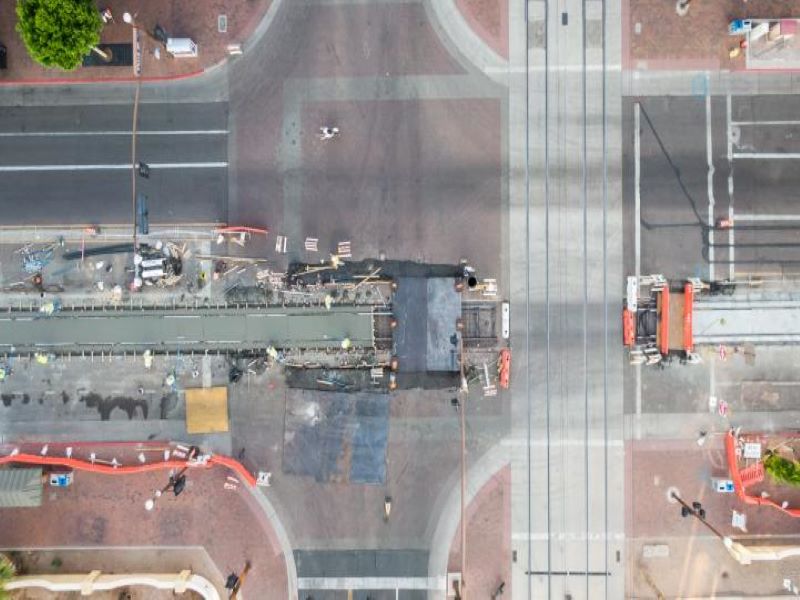Valley Metro is constructing the Tempe streetcar line in Arizona, US, to offer connectivity to neighbourhoods, business centres, and regional destinations.
The Tempe streetcar line represents a major expansion of the transit system in the Valley and will serve as its first modern streetcar line.
The streetcar will connect the Valley Metro Rail system to the Arizona State University (ASU), residential neighbourhoods, Rio Salado Parkway corridor, downtown Tempe, and Mill Avenue.
The project is anticipated to improve the commuter service in the downtown Tempe which is one of the highest transit ridership areas in the region. It will also provide riders with improved access and mobility to various transportation services.
The planning stage was completed between 2014 and 2016, while the design phase was conducted between 2016 and 2018. The estimated investment in the project is $200m and the streetcar system is expected to become operational in 2021.
Tempe Streetcar route and stops details
The 4.82km-long Tempe Streetcar will include 14 stations and offer connections to the light rail serving Phoenix, Phoenix Sky Harbour International Airport and Mesa. The two light rail connections will be provided at Mill Avenue and Dorsey Avenue.
The streetcar will travel on Rio Salado Parkway from the Marina Heights development west to Mill Avenue. The route will include a downtown loop on Mill and Ash avenues and proceed southward to Apache Boulevard before turning east to Dorsey Lane.
The service will operate off-wire on Mill Avenue and at gateway intersections. The streetcar system will also share the road with regular vehicle traffic. The designs of the stops will include public art concepts and landscaping. Shelters with vertical and horizontal shade will be installed at the streetcar stops. The design will also include trees along the route.
The frequency of operations during the daytime on weekdays is expected to be one vehicle every ten minutes, while the service will run every 20 minutes in the evenings. The streetcar will operate every 15 minutes on Saturdays and Sundays.
Construction details of Tempe streetcar project
Construction on the streetcar project began in June 2017 with works including the relocation of utilities and other preliminary works. The project moved to major construction in 2018 after receiving approval from the Federal Transit Administration (FTA) for the next phase of construction.
Installation of nearly half of the entire track and 37,000ft of electrical conduit was completed by August 2019.
The project work during the period between May and October 2020 will cover four zones. The construction will include final track installation and stop platforms on the Rio Salado Parkway between Ash Avenue and Packard Drive.
The Downtown Tempe zone, which is referred to as zone two, will witness the development of stop platforms and the installation of track and systems. It comprises Ash and Mill avenues along the route between University Drive and Rio Salado Parkway. Track installation will take place between Ash Avenue and University Drive until July 2020.
In addition, the crew will perform street work, system and track installation, and streetcar stop platforms in the zones covering S Mill Avenue/Gammage Curve and Apache Boulevard. Catenary poles will be erected along the route to support the overhead wires.
The first stage of the connection of the streetcar system to the light rail network at Apache Boulevard and Dorsey Lane was completed in March 2020.
Rolling stock for Tempe streetcar project
The Tempe streetcar fleet will include six Liberty streetcars. The on-board battery will store energy to enable the vehicles to operate in sections where there are no overhead power wires.
The hybrid battery system can be recharged using the overhead catenary system (OCS).
Key features of the streetcar vehicle include an automatic levelling system that allows for station-level boarding to improve accessibility for passengers. The levelling technology will take into account the changes in passenger loading and make adjustments to the platform height accordingly.
The 21.33m-long, 2.63m-wide vehicles will be capable of carrying 120 passengers with seating for 32 persons. The Liberty Car will have more than 70% low-floor space to reduce dwell times. Each vehicle will have a provision for priority seating for disabled persons or individuals with reduced mobility. The project also includes four sites for rail storage and welding.
Financing for the Tempe streetcar project
The funding for the project will be sourced through federal grants and regional funds including Proposition 400. Valley Metro secured $75m in grants from the US Department of Transportation’s Federal Transit Administration to support the development of the streetcar project in September 2019.
The FTA extended the grant under its Capital Investment Grants (CIG) programme.
Contractors involved
Stantec Consulting Services was awarded a contract to provide design services for the streetcar project. Brookville Equipment won a $33m contract for designing, building and supplying six Liberty streetcars.
Stacy and Witbeck received a construction manager at-risk (CMAR) contract to support the construction of the project.





